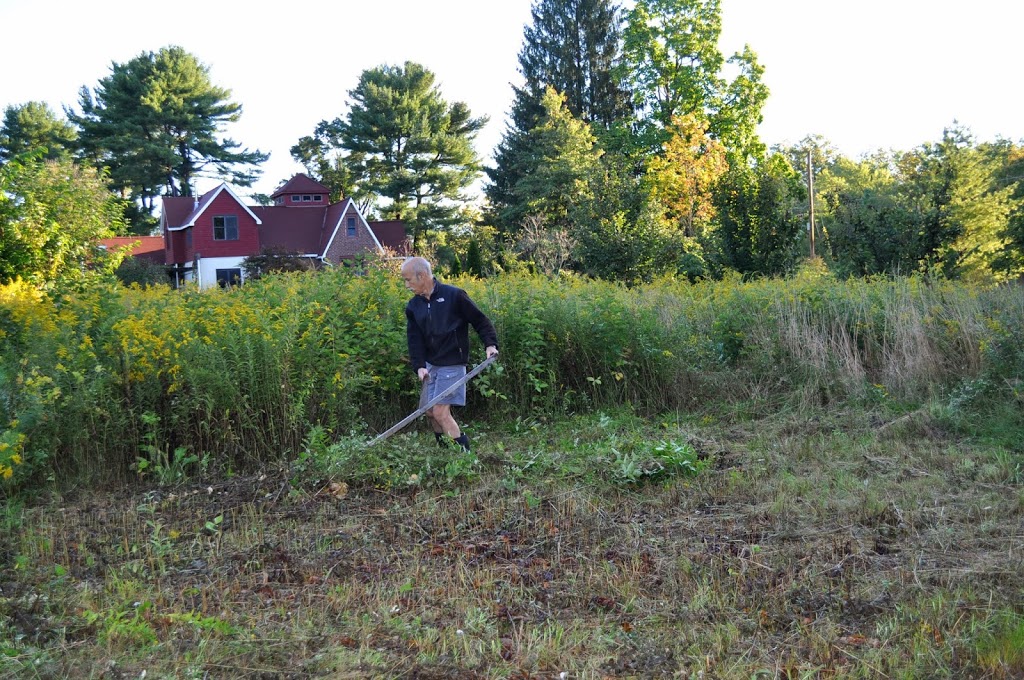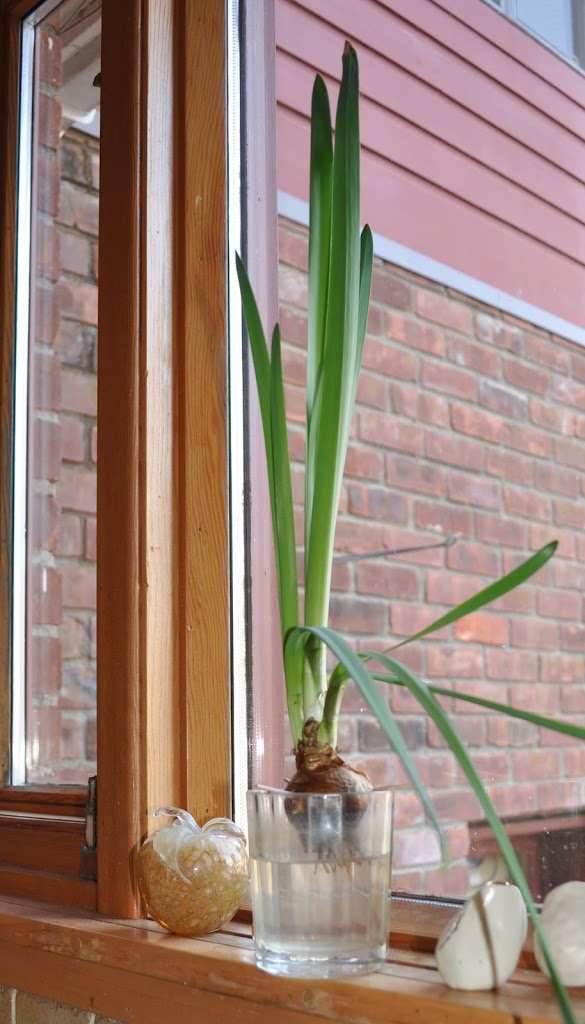Waste Not, Want Not
Two Reasons to Compost
With weeding, harvesting, watering, swimming, kayaking, golf, and biking to do this time of year (not that I do all these), why would anyone spend time making compost? For one or both of two reasons, that’s why.
First, as an environmentally sound way to get rid of so-called “garbage.” Landfilled, the valuable nutrients and organic matter locked up within old broccoli stalks, rotten tomatoes, even old cotton clothes are taken out of our planet’s nutrient cycle almost forever. Landfilling, to me, also disrespects the soil, that thin skin over the Earth that supports much of life here.
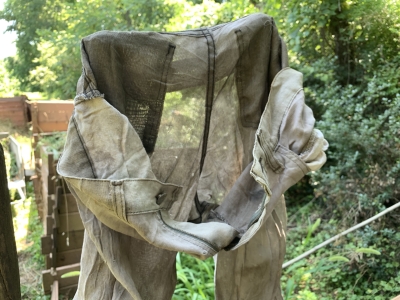
Once Levi’s, now almost compost
This leads to the second reason to make compost now. I require plenty of compost for my gardens so need to scrounge every bit of waste organic material as it becomes available. Even go out of my way to haul it in. Or create it.
Sustainabilityness
Having oodles of compost goes a long way to make a garden or farm truly sustainable. Even though relatively low in nitrogen, as far as plant needs, compost can do away with the need for any other fertilizer.
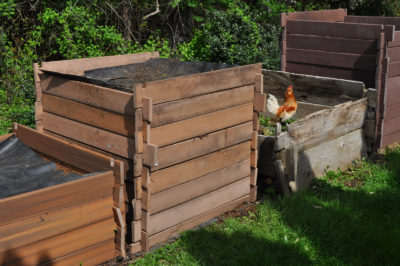
For years, just to make sure that my compost-fed plants were not going hungry — for nitrogen — I spread soybean meal on the ground just before laying down the compost.
Soybean meal provides an organic form of nitrogen but is hardly a sustainable way to nourish the soil. That meal comes from soybeans grown on fields who-knows-where, fed with fertilizers needing fossil fuels for their production, tilled by fossil-fueled tractors, processed in fossil-fueled factories, and transported by fossil-fueled trucks. The same could more or less be said for any fertilizer, organic or otherwise, except compost.
Years ago I made a computation, based on an estimate of how fast nitrogen is released from compost and average nitrogen needs of vegetable plants, of the amount of compost needed to provide all the nourishment a garden would need for one growing season. The amount is about one cubic yard per 300 square feet or, (if you’re a farmer, you should be sitting down), about 70 tons per acre. But these figures are for planted areas, so compost need be applied to only the planting beds.
Also, compost has a residual effect, with only a portion of nutrients being released each year. Yearly additions build soil fertility and nourish a healthy soil life.

On my farmden, a one inch depth of compost provides all the nourishment needed for intensively grown, healthy and healthful crops for an entire season. I just lay the stuff on top of the ground to get the most out of it nutritionally and biologically, and provide a weed-quelling mulch and seedbed.
Self-Analysis
Is making compost truly a way to sustainably nourish the ground? As with so much of agriculture, a balance is sought. Let’s check what goes into my compost piles.
The usual, of course: carrot peelings watermelon rinds, egg shells, old bread, and other fungal and bacterial treats from the kitchen compost bucket; cabbage stalks, old lettuce, and weeds (all even if pest-ridden, diseased, or otherwise) from the garden. I also throw in old cotton or wool clothing, even leather shoes and gloves. Because of noncompostable components such as elastic bands and synthetic cloth parts, they all yield very interesting products staring out in the finished compost. Occasional, light sprinklings of soil add bulk to the finished mix. Occasional, sprinklings of ground limestone keep planted ground, final stop for the compost, in the right pH range.
Occasional, light sprinklings of soil add bulk to the finished mix. Occasional, sprinklings of ground limestone keep planted ground, final stop for the compost, in the right pH range.
Two feedstuffs make up the bulk of the compost. One is horse manure, the most questionably sustainable part of the whole mix. The horse manure is an abundant waste product of a nearby horse farm.
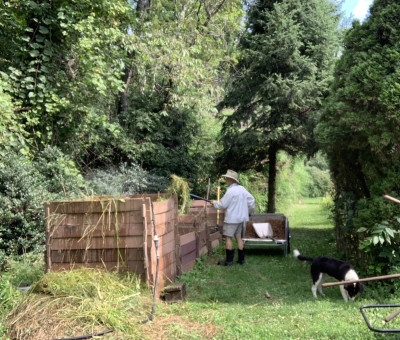
Fashionable
The other feedstuff is hay that I scythe from a one acre field here on the farmden. In mowing hay and composting it, then using the compost to feed my gardens, I am, it seems, “robbing Peter to pay Paul.” But given time, soils regenerate nutrients on their own so I try to rotate which portions of the field I scythe.
Not for You? Then . . .
Making compost isn’t, for reasons of time, space, and inclination, for everyone. In some regions, you can deposit your compostables at a recycling center for composting. And an increasing number of companies are popping up that, for a fee, will pick up your organic waste for recycling. Check web listings for town and county offerings.
I like to make compost, finding it interesting, useful, even enjoyable. And my plants love it.

